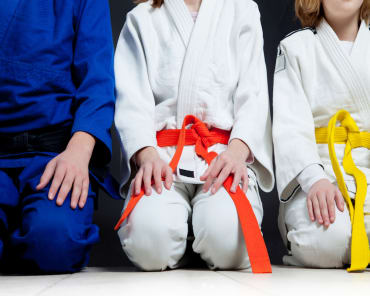Brazilian Jiu-Jitsu (BJJ) training in the academy and military combatives share the common goal of enhancing physical skills, mental resilience, and self-defense capabilities. However, each avenue offers a distinct approach to training. This blog explores the differences between BJJ training in the academy and military combatives, highlighting the unique benefits of both and making the case for why servicemembers should engage in both practices.
BJJ Training in the Academy
1. Technical Precision and Sport Focus:
BJJ training in the academy places a strong emphasis on technical precision and mastery of grappling techniques. The sport-focused nature of BJJ encourages practitioners to refine their techniques, understand positional control, and execute submissions with precision. The academy environment provides a supportive community where practitioners can engage in friendly sparring, participate in competitions, and deepen their understanding of BJJ as a martial art.
2. Mindful Problem-Solving:
BJJ training cultivates a mindful approach to problem-solving on the mats. Practitioners learn to analyze their opponents' movements, anticipate reactions, and adapt their strategies in real-time. This mental agility not only enhances their performance in sportive settings but also fosters critical thinking skills applicable to various scenarios.
3. Community and Camaraderie:
The academy setting creates a community of like-minded individuals dedicated to their BJJ journey. The camaraderie formed through shared challenges, victories, and defeats contributes to a positive and supportive training environment. This sense of community strengthens the mental and emotional aspects of training.
Military Combatives Training
1. Tactical Application and Real-World Scenarios:
Military combatives training focuses on tactical applications and real-world scenarios relevant to military and self-defense situations. The techniques taught are tailored for quick and effective responses in high-stakes environments. Military combatives emphasize situational awareness, weapon retention, and adaptability to unpredictable circumstances.
2. Strategic Use of Force:
In military combatives, the strategic use of force is a central theme. Servicemembers learn techniques that prioritize control and restraint, allowing them to manage threats without unnecessary escalation. This emphasis aligns with the principles of military engagement, where measured responses are critical to mission success and minimizing collateral damage.
3. Team Dynamics and Unit Integration:
Military combatives training places a strong emphasis on team dynamics and unit integration. Servicemembers learn to coordinate and collaborate with their teammates, reinforcing the importance of working together seamlessly in high-pressure situations. This collaborative approach ensures that combatives skills are integrated into the broader context of military operations.
Why Servicemembers Should Do Both
1. Comprehensive Skill Set:
Engaging in both BJJ training in the academy and military combatives provides servicemembers with a comprehensive skill set. BJJ hones technical grappling proficiency and fosters a deep understanding of the martial art, while military combatives equip individuals with tactical responses tailored to their service context. The combination creates a well-rounded skill foundation.
2. Adaptability in Diverse Scenarios:
The synergy of BJJ and military combatives promotes adaptability in diverse scenarios. Servicemembers can draw upon their BJJ techniques for controlled engagement and leverage military combatives skills for real-world applications. This adaptability enhances their ability to respond effectively to a spectrum of challenges.
3. Enhanced Mental Resilience:
The dual training approach contributes to enhanced mental resilience. BJJ fosters problem-solving skills and mental fortitude on the mats, while military combatives instill the discipline and focus required in high-stakes situations. The combination prepares servicemembers to navigate physical and mental challenges with resilience and adaptability.
4. Versatility in Self-Defense:
Combining BJJ and military combatives provides versatility in self-defense. BJJ techniques offer effective ground control and submission skills, while military combatives cover a range of scenarios from standing encounters to close-quarters combat. Servicemembers gain a versatile toolkit for self-defense tailored to different situations they may encounter.
5. Unit Cohesion and Team Building:
Participating in both forms of training fosters unit cohesion and team building. The shared experiences in the academy and military combatives training create a strong sense of camaraderie among servicemembers. This unity contributes to effective teamwork, mutual support, and the development of a cohesive unit.
In conclusion, BJJ training in the academy and military combatives offer servicemembers distinct yet complementary paths to excellence. The technical precision, community, and mindful problem-solving in BJJ complement the tactical applications, strategic use of force, and team dynamics emphasized in military combatives. Engaging in both forms of training provides a well-rounded skill set, adaptability in diverse scenarios, enhanced mental resilience, and a versatile approach to self-defense – ultimately preparing servicemembers for the multifaceted challenges they may encounter in their service.






